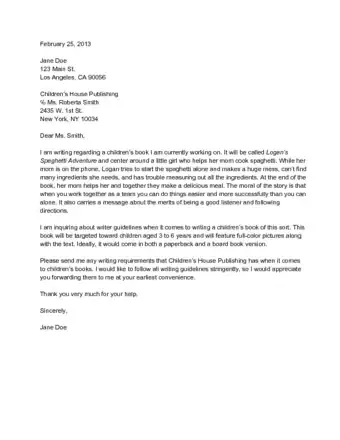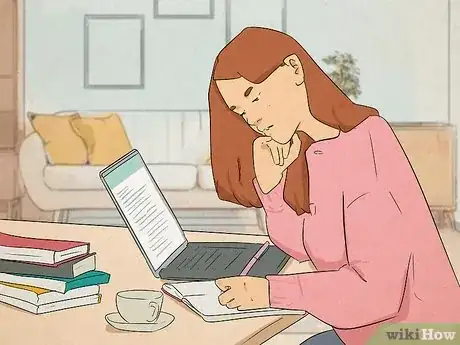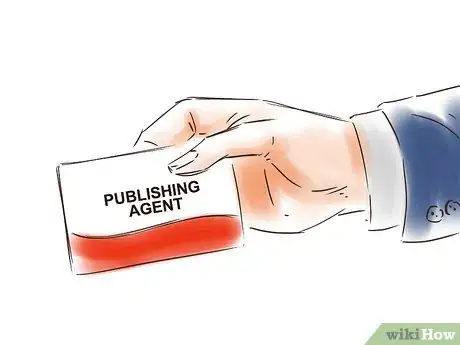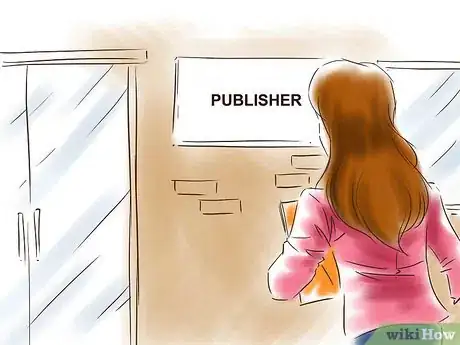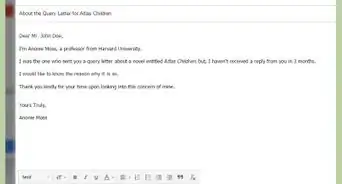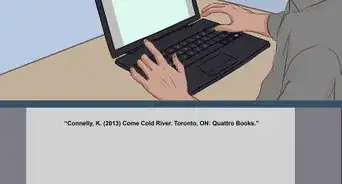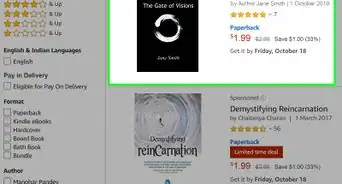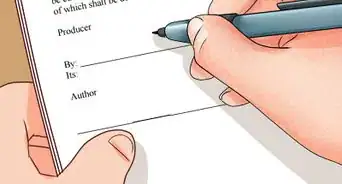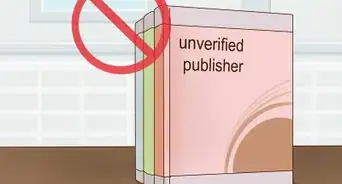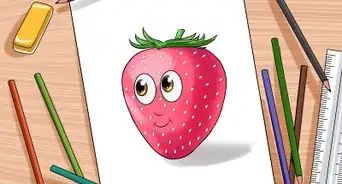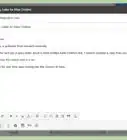This article was co-authored by Lydia Stevens. Lydia Stevens is the author of the Hellfire Series and the Ginger Davenport Escapades. She is a Developmental Editor and Writing Coach through her company "Creative Content Critiquing and Consulting." She also co-hosts a writing podcast on the craft of writing called "The REDink Writers." With over ten years of experience, she specializes in writing fantasy fiction, paranormal fiction, memoirs, and inspirational novels. Lydia holds a BA and MA in Creative Writing and English from Southern New Hampshire University.
wikiHow marks an article as reader-approved once it receives enough positive feedback. In this case, several readers have written to tell us that this article was helpful to them, earning it our reader-approved status.
This article has been viewed 736,665 times.
Book publishing in general has changed very significantly in the last few years. Children's books are no exception to this. If you've written a children's book, you're probably eager to get it published. The following article provides step-by-step advice on how to tackle the current market if your goal is to publish literature for children.
Steps
Sample Letters to Publishers
Self-Publishing
-
1Understand the risks. Although some forms of self-publishing are cheap, successfully self- publishing a children's book isn't. This is because to reach your audience, you're almost invariably going to have to publish actual paper books – most kids don't rely on e-readers for their daily dose of Richard Scary and Roald Dahl. Furthermore, the children's book market is extremely competitive, and profit margins tend to be small even for successful books.[1]
-
2Choose a service. A traditional small vanity press is usually the best choice to self-publish your children's book, since it's important to have physical copies on hand for promotion. Vanity presses charge you money to print a set number of copies of your book, typically between 50 and a few hundred, and then print and ship them directly to you. Alternatively, you can choose a print-on-demand service, which will print one copy every time a copy is ordered, and charge you for each one. These are easily found online. Shop around and compare prices and feature packages to find one you like.
- Color is expensive. Expect to pay a lot more for a picture book than you would for a chapter book without pictures, or with black-and-white pictures.
Advertisement -
3Gather funds. Now that you have a printing service lined up, you'll need to find some way to pay them to print copies of your book. (Even if you choose a print-on-demand service, you should print at least 20 copies of the book for yourself to show to stores and other customers.) Start by asking your friends and family to donate a small amount, and plan to match the total with some of your savings. Offer them a copy of the book once it's printed, in return for their generosity.
- Other popular options include starting a Kickstarter fund or taking a second job one or two days a week.
- There's a decent rundown of other fundraising methods in this wikiHow.
-
4Print and promote. Once you've paid the press to print and send you some books, it's time to beat the pavement. Start with local independent bookstores. Show the owner your book and ask if you can sell it on his or her shelf space for a commission. Ask larger bookstores as well, but don't expect to always get a positive response. Offer to do book readings at stores that carry your book. This is a good way to drum up business for both you and the owner, so most who've agreed to carry your book should agree to a reading as well.
- Once bookstores have been covered, talk to libraries. Donate a copy of your book to each branch, and ask the head librarian if there's any way you could stage a reading at your local branch.
- Consider schools. Elementary schools are a good way to get your book into the hands of local children, but it's unlikely you'll be able to simply waltz in and read to a class. Instead, speak with the librarian about donating a copy, and then speak to school administrators about possibly staging a reading event. If they say no, don't press the issue.[2]
- Sell online. Be sure to set up at least a small website or Facebook page to promote your book. People who are interested in it should be able to easily order a copy from there. It also provides a neat way for parents to get more information about you and your book before buying.[3]
Traditional Publishing
-
1Decide whether to hire an agent. You already have a manuscript, so the logical next step is to submit it to publishers. Unfortunately, many publishing houses won't look twice at your book without the solicitation of a literary agent.[4] In exchange for a commission on your earnings (usually 15%), an agent will critique your manuscript, promote it to publishers, and negotiate a contract for payment.
- It can take time to find a good agent who'll work with you if you haven't been published yet, and there are plenty of bad agents and scammers in the game. Be careful, and only work with agents who are recommended by trustworthy sources. Some of the best places to find agents worth your time include:
- Guide to Literary Agents, a book published every year by Writer's Digest Books
- Literary Marketplace, a yearly book available in the research section of most libraries
- The Association of Author's Representatives (AAR).
- It can take time to find a good agent who'll work with you if you haven't been published yet, and there are plenty of bad agents and scammers in the game. Be careful, and only work with agents who are recommended by trustworthy sources. Some of the best places to find agents worth your time include:
-
2Find publishers. If you decide not to hire an agent, you'll need to scour sources for publishers who accept unsolicited manuscripts for children's books. Thoroughly review the latest edition of the Children's Writers and Illustrators Market, and note every publisher who seems to fall into the appropriate category.
- Pay special attention to published guidelines and tips for submissions. Many publishers won't even bother reading a manuscript that doesn't conform to its submission guidelines. If you can't find the details you need, send an e-mail or a self-addressed stamped envelope to the publisher and request submission guidelines.
- Find children's books that are similar to yours in content and audience and make note of the companies that published those books. They may be more likely to look at your manuscript favorably.
-
3Submit your manuscript. Submit to each agent or publisher according to their specific guidelines.[5] Follow the formatting requirements exactly as described. Expect to hear back from the agencies and publishers you submit to within three months of submission. If you haven't heard from the by then, chances are you never will.
- Unless you are a professional illustrator, do not send illustrations.[6] Publishers typically choose their own to avoid potential copyright issues. If you're dead set on including your own illustrations in the book, it's best to go through an agent, who'll be able to make a stronger argument to publishers than you can.
-
4Be persistent. Keep copying manuscripts and sending them out. Repeat, repeat, repeat. Many authors got rejected upwards of 50 times before their first books were published. Rejection isn't a wake-up call; it's a normal part of the submission process. Eventually, either someone will offer you a contract, or you'll run out of people to submit to. Don't stop until that point.
- When you get offered a contract, do research to be sure it's a fair one. If you have an agent, he or she will take care of this step for you; otherwise, consider hiring an expert to consult with you for an hour or two about the contract and whether or not it's worth entering.
- If you've been rejected hundreds of times and agents aren't showing any interest, it may be time to up your game. Join a community writing workshop, or read a book about how to write a great children's story. You might find that one or two simple style mistakes have been preventing your book from getting the attention it deserves.[7]
General help for preparing the book
-
1Research the market. This, of course, is imperative for publishing any form of literature. Have a browse in major bookstores, or online; find out what is selling and what is popular for children at present. How does what you've written compare? Is it similar, or entirely different? Are you following familiar themes or doing something very new? This will give you an idea on where you will stand in the current market, and how and where to target your book.
-
2Make choices regarding age group. It is not as simple to aim books at children as it is at adults. Think carefully about what age group you are aiming your children's book at. Is it very simple? Is it a little more complex and for slightly older children? Is your work designed to be read aloud by a parent or teacher, or can the child read it to themselves?
-
3Think about the design and layout of the book. Many people will tell you that for younger children, the typeface should always be large, or enlargeable on a Kindle, so it is easier for them to read. You might even want to think about the size of the book itself, if you are planning to publish it in print. Famous children's writer Beatrix Potter deliberately had small books printed so they would fit in the hands of very young children.
- Children's books are all about the illustration. Pictures are vital for telling a children's story, and, some would argue, even more important than the words. If you are not an artist yourself, get an illustrator. Children, especially the very young, are very visual. They will understand and enjoy the story more if there are pictures.
-
4Edit. When editing, pay attention to the language you have used. Children's stories must follow a simple structure, with a clear beginning, middle and end. Think deeply about the language you use to tell the story. Most of it should be very basic, but don't be afraid to throw the occasional longer word in there too; this will serve an educational purpose as well as sparking interest in the child. Also, think about what level of literacy your target age group are likely to currently be learning in school, and try to incorporate it into your story. Do some research into the current curriculum if need be.
Community Q&A
-
QuestionIn section two above, we are warned not to include illustrations, but in section 3, we are told illustrations are a must. Why the contradiction?
 Community AnswerThe sections were probably written by different people with different perspectives. Illustrations are definitely a must for children's books, the disagreement is just on whether you should take care of them yourself or have the publisher take care of them. If you're self-publishing, you'll need to take care of it yourself, probably by hiring a professional illustrator (unless you're capable of doing it well yourself). If you're doing traditional publishing, it's up to you, but know that the publisher might want to have some say and could reject the illustrations you submit and prefer to hire an illustrator for the book themselves.
Community AnswerThe sections were probably written by different people with different perspectives. Illustrations are definitely a must for children's books, the disagreement is just on whether you should take care of them yourself or have the publisher take care of them. If you're self-publishing, you'll need to take care of it yourself, probably by hiring a professional illustrator (unless you're capable of doing it well yourself). If you're doing traditional publishing, it's up to you, but know that the publisher might want to have some say and could reject the illustrations you submit and prefer to hire an illustrator for the book themselves. -
QuestionWhich fonts do children's book publishers prefer?
 Community AnswerFor manuscripts, you should stick to something basic, like arial or courier.
Community AnswerFor manuscripts, you should stick to something basic, like arial or courier. -
QuestionHow do I know if my story is suitable for children?
 Community AnswerIf you are concerned that the content of your story is inappropriate for children, consult friends or family members with children for their opinion. If you want to know if the writing is suitable for children, test it on some children and see how they react. Ask them for their opinions on your story.
Community AnswerIf you are concerned that the content of your story is inappropriate for children, consult friends or family members with children for their opinion. If you want to know if the writing is suitable for children, test it on some children and see how they react. Ask them for their opinions on your story.
Warnings
- No good agent will ever charge you a “reading fee” or any other fees. They make their money when they sell your book, and not before. Members of the Association of Author's Representatives (AAR) can generally be trusted; outside the AAR, use caution and get terms in writing.⧼thumbs_response⧽
- When you self-publish, do your homework. Be very conscious of hidden or extra fees, especially when they're written as percentages. Don't buy in if you can't get a clear idea of what the final cost will be.⧼thumbs_response⧽
- If you choose to go down the self-publishing route, be aware that this is a lot of hard work. You will have to be prepared to spend some money, and organize all the formatting, design, promotion etc by yourself.⧼thumbs_response⧽
References
- ↑ https://shaylaraquel.com/blog/childrensselfpub
- ↑ https://www.janefriedman.com/self-publish-childrens/
- ↑ https://www.janefriedman.com/self-publish-childrens/
- ↑ https://www.huffpost.com/entry/the-inside-skinny-on-kids_b_806300
- ↑ https://www.huffpost.com/entry/the-inside-skinny-on-kids_b_806300
- ↑ https://blog.reedsy.com/how-to-publish-a-childrens-book/
- ↑ https://blog.reedsy.com/how-to-publish-a-childrens-book/
About This Article
To self-publish a children’s book, start by finding a vanity press that can print a set number of copies of your book and ship them directly to you. Alternatively, choose a print-on-demand service, which will print 1 copy every time a book is ordered and charge you per printing. Once you have some copies of your book, take them to local bookstores to see if they’d be interested in selling them, donate copies to the library, or sell them online. Additionally, offer to do book readings in schools or at events to gather interest. To learn how to find a traditional publisher for your children’s book, keep reading!

